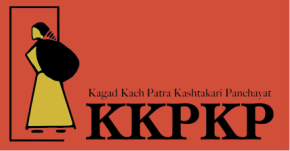Profile of Scrap CollectorsSurprisingly little is known about the relationship between the informal sector and social stratification. It is often assumed that the formal sector is drawn from higher social strata with higher education. How this originates is usually left unanswered (Bremen 1994). The authors believe that it is important to examine the social dynamics of occupational entry. Scrap collectors are most likely to be illiterate, landless, Dalit[1] women migrants from the Marathwada region of Maharashtra state aged between 36 and 50 years who have been resident in the slums of Pune for at least two decades. Almost all the scrap collectors in Pune are natives of Maharashtra. They belong to the districts of Solapur, Latur, Osmanabad and Beed (Table 3.1.4). The three latter districts are in the Marathwada region that used to be part of the dominion of the Nizam of Hyderabad in pre-independence India. The four districts mentioned above form a contiguous belt and are known to be chronically drought-prone, agriculturally unproductive and industrially under-developed. The presence of inter-state migrants in this occupation is negligible.
Half the scrap collectors are first generation migrants and are more likely to be in the age group of 36-50 years (Table 3.1.5). The majority of those who migrated over 40 years ago are from the districts of Solapur and Ahmednagar (Table 3.1.4). Most scrap collectors did not own any land in their native villages (Table 3.1.6). Those that did mostly belonged to Latur and Ahmednagar districts. The primary full time occupation of first generation migrants was agricultural wage labour (shetgadi) or bonded labour (salgadi) (Table 3.1.7). Migration was a consequence of their inability to secure wage labour during the widespread drought. There were two severe droughts in Maharashtra in 1965-1966 and 1972-73. The drought of 1972 marks a watershed in the migration of scrap collectors (3.1.9). Drought and poverty account for the rural-urban migration of three fourths of the scrap collectors. The scrap collectors from Solapur, Beed, Osmanabad and Latur (Table 3.1.8) have cited drought as the primary reason for migration. While poverty has been cited by those from Ahmednagar. The data show that migration on account of the drought was higher among the agricultural wage labourers than among the cultivators (Table 3.1.7). The push factor is therefore more significant for the rural-urban migration of scrap collectors. The data show that the phenomenon of out-migration from Pune for economic purposes is almost non-existent. There is a sharp division in the methods of scrap collection adopted by men and women (Table 3.1.14). Waste-pickers are almost always women. This is so because retrieving scrap from putrefying garbage is considered to be dirty and demeaning. As a matter of fact in the early years of our interaction with waste-pickers, they themselves did not necessarily view scrap collection as ‘work’, even though they earned an income from it. “Kachra chivadte” (we rummage through garbage) is the derogatory term they would use to describe their work. The few men that do waste pick, are mostly very old and either unable to get other work or are physically incapable of doing other work after a lifetime of manual wage labour. Mahesh Arne, one of the rare young male waste pickers told the interviewer, “the shame of collecting garbage kills me but I have no other option.” The occupational data for 1439 members show that there are 45 male waste pickers and 192 female waste pickers. Thus males constitute 20% of total waste pickers. Nearly 46% of male waste pickers are below 35 years of age. The data also show that 5 out of 10 male respondents have joined waste picking after working in other occupation for less than 3 years. Itinerant buyers on the other hand are mostly men. Waste-picking is seen as a form of scavenging while itinerant buying is seen as a form of petty trading. Itinerant buyers purchase small quantities of scrap from homes and commercial establishments. Consequently they enjoy better working conditions and a higher status in the scrap collection hierarchy. One in every five of the scrap collectors is forced to augment their earnings from scrap collection by doing some other work as well. Upward occupational mobility even within the sector is another issue that needs consideration. Young male waste-pickers (27 per cent) graduate to itinerant buying at the first opportunity. This is not so in the case of female waste-pickers (10 per cent). There is little scope for movement into itinerant buying given the present structure of the sector. [1] The term Dalit meaning oppressed was used by Dr Babasaheb Ambedkar for the collective of all the erstwhile untouchable castes. It has been imbued with political meaning ever since and will be used henceforth in this report. |

|
|